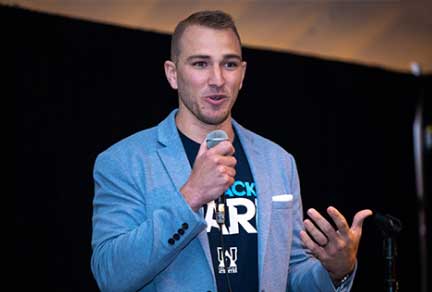Navigating to 2030: A playbook for differentiating next-generation obesity therapies
This article is part of Parexel's "Navigating to 2030" playbook series on differentiating next-generation obesity therapies. This series offers strategic insights across trial design, regulatory considerations, clinical operations, and patient retention strategies to support sponsors in this rapidly evolving and competitive market.
Home Section 1 Section 2 Section 3 Section 4 Section 5
By 2050, more than half of adults and a third of children and adolescents worldwide will be overweight or obese.1 The personal, societal, medical, financial, and mental health burdens of these complex, chronic conditions are multiplying rapidly. Novo Nordisk and Eli Lilly lead the obesity and overweight market with their first-generation glucagon-like peptide-1 agonists (GLP-1s). Behind them is a wave of more than 100 anti-obesity drug candidates in various stages of development (Table 1). The global market for these drugs could exceed $100 billion by 2030.2
At Parexel, over the past five years, we have completed 22 Phase I to IV obesity and obesity-related clinical trials for sponsors, enrolling 10,000 patients at more than 350 sites. We have conducted an additional 300 projects in other endocrine and cardiometabolic disorders, with a concentration in diabetes. Many biotech companies ask us about strategies for developing second-generation GLP-1s, combination therapies, and next-generation products for obesity and related cardiometabolic diseases, such as metabolic dysfunction-associated steatohepatitis (MASH). They all want to know how to differentiate their drugs in a crowded market.
In our experience, decision-making must begin with precisely defined and evaluated market positioning, which in turn determines optimal trial designs and regulatory strategies. Sponsors must then rely on patient insights and operations excellence to enroll and retain eligible patients in clinical studies.
In this playbook, we present the perspectives of experts and former regulators at Health Advances and Parexel on five of the most critical aspects of developing next-generation products to address the global epidemic of obesity and metabolic diseases:
- Carving a unique niche in the obesity and cardiometabolic markets
- Employing advanced trial strategies to meet stakeholders’ needs
- Proactively filling evidence gaps and mitigating regulatory risks
- Streamlining operations for rapid and reliable enrollment
- Engaging and retaining trial participants with targeted strategies
We hope you find this playbook helpful on your journey to commercial success.
Table 1. Global obesity pipeline (n=423) as of April 2025.
Resources
- Global, regional, and national prevalence of child and adolescent overweight and obesity, 1990–2021, with forecasts to 2050: a forecasting study for the Global Burden of Disease Study 2021, The Lancet (March 8, 2025).
- Dozens of new obesity drugs are coming: these are the ones to watch, Nature (February 12, 2025).
Sign up for our webinar "Unlocking Success in Obesity Clinical Trials: Mastering Patient Engagement and Retention." Do not miss this opportunity to take a meaningful step toward smarter, more successful obesity trials.
Related Insights
Webinar
Unlocking Success in Obesity Clinical Trials: Mastering Patient Engagement and Retention
May 15, 2025
Whitepaper
Optimize trial retention: Targeted strategies to engage patients
May 1, 2025
Whitepaper
Execute with precision: Streamline operations for rapid and reliable enrollment
May 1, 2025
Whitepaper
Anticipate regulatory expectations: Fill evidence gaps and mitigate risks
May 1, 2025
Whitepaper
Design for efficiency: Employ trial strategies to meet stakeholder needs
May 1, 2025
Playbook
Define your differentiators: Carve a unique niche in the market
May 1, 2025
Article
Key strategies to mitigate the risks of asthma drug development
Jan 24, 2025
Blog
Updated European Society of Cardiology guidelines: opportunities and risks for clinical trials
Jan 21, 2025
Podcast
Enabling Successful Sites, Episode 2: Empowering Sites to be More Inclusive Through Cultural Sensitivity Training
Jun 28, 2024
Blog
AI Milestones: AI-enabled EKG reads and alerts save lives: human-AI collaboration in practice
Jun 6, 2024
Related Insights
Webinar
Unlocking Success in Obesity Clinical Trials: Mastering Patient Engagement and Retention
May 15, 2025
Whitepaper
Optimize trial retention: Targeted strategies to engage patients
May 1, 2025
Whitepaper
Execute with precision: Streamline operations for rapid and reliable enrollment
May 1, 2025
Whitepaper
Anticipate regulatory expectations: Fill evidence gaps and mitigate risks
May 1, 2025
Whitepaper
Design for efficiency: Employ trial strategies to meet stakeholder needs
May 1, 2025
Playbook
Define your differentiators: Carve a unique niche in the market
May 1, 2025
Article
Key strategies to mitigate the risks of asthma drug development
Jan 24, 2025
Blog
Updated European Society of Cardiology guidelines: opportunities and risks for clinical trials
Jan 21, 2025
Podcast
Enabling Successful Sites, Episode 2: Empowering Sites to be More Inclusive Through Cultural Sensitivity Training
Jun 28, 2024
Blog
AI Milestones: AI-enabled EKG reads and alerts save lives: human-AI collaboration in practice
Jun 6, 2024



